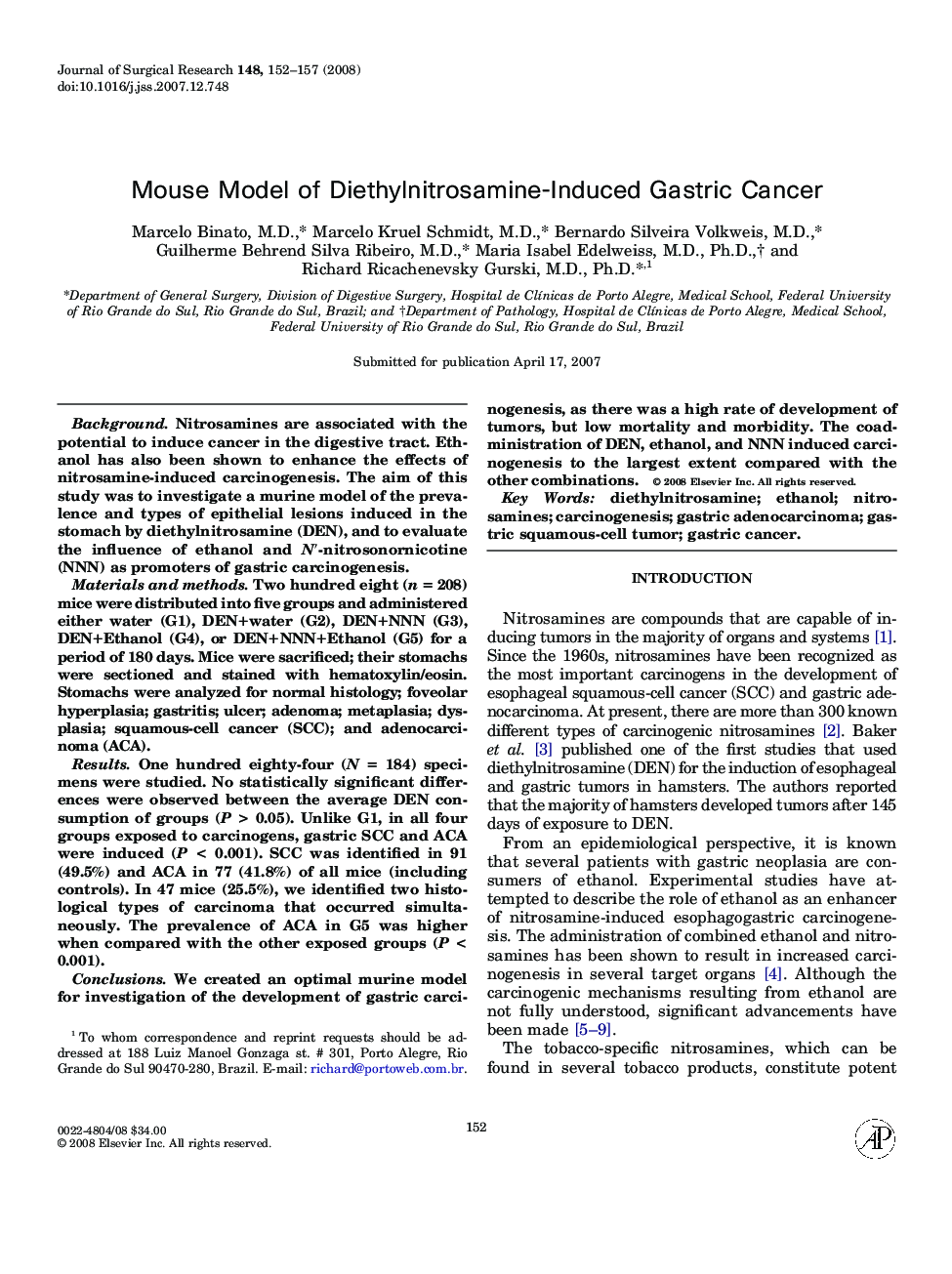| Article ID | Journal | Published Year | Pages | File Type |
|---|---|---|---|---|
| 4304100 | Journal of Surgical Research | 2008 | 6 Pages |
BackgroundNitrosamines are associated with the potential to induce cancer in the digestive tract. Ethanol has also been shown to enhance the effects of nitrosamine-induced carcinogenesis. The aim of this study was to investigate a murine model of the prevalence and types of epithelial lesions induced in the stomach by diethylnitrosamine (DEN), and to evaluate the influence of ethanol and N′-nitrosonornicotine (NNN) as promoters of gastric carcinogenesis.Materials and methodsTwo hundred eight (n = 208) mice were distributed into five groups and administered either water (G1), DEN+water (G2), DEN+NNN (G3), DEN+Ethanol (G4), or DEN+NNN+Ethanol (G5) for a period of 180 days. Mice were sacrificed; their stomachs were sectioned and stained with hematoxylin/eosin. Stomachs were analyzed for normal histology; foveolar hyperplasia; gastritis; ulcer; adenoma; metaplasia; dysplasia; squamous-cell cancer (SCC); and adenocarcinoma (ACA).ResultsOne hundred eighty-four (N = 184) specimens were studied. No statistically significant differences were observed between the average DEN consumption of groups (P > 0.05). Unlike G1, in all four groups exposed to carcinogens, gastric SCC and ACA were induced (P < 0.001). SCC was identified in 91 (49.5%) and ACA in 77 (41.8%) of all mice (including controls). In 47 mice (25.5%), we identified two histological types of carcinoma that occurred simultaneously. The prevalence of ACA in G5 was higher when compared with the other exposed groups (P < 0.001).ConclusionsWe created an optimal murine model for investigation of the development of gastric carcinogenesis, as there was a high rate of development of tumors, but low mortality and morbidity. The coadministration of DEN, ethanol, and NNN induced carcinogenesis to the largest extent compared with the other combinations.
